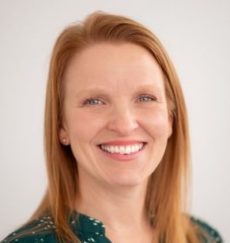
Standing along the banks of the Potomac River where she’d come for a convention last week, a skilled nursing provider dramatically recounted her efforts to stay afloat back home in the Midwest.
Stricken by major staffing woes (complicated by the region’s overwhelming vaccine hesitancy), her company had been forced to close a facility that had long served seniors and, more recently, taken on a mission to serve residents with mental illness.
The building had a storied past, but post-COVID economic woes had written its final chapter.
As she told my colleague Jim Berklan and me about the emotional drain of continually losing staff to retirements and resignations, this exec pivoted to an even sadder aspect of her story. In transitioning some of the facility’s vulnerable residents to new homes, there had been deaths — a not uncommon occurrence when moving populations with multiple comorbidities or struggling with end-stage disease.
As we listened, it was hard not to think of what was just down the river. Let’s call it the Swamp of Indecision.
Months after President Joe Biden pitched what appeared to be a lifeline to direct care providers, lawmakers in the nation’s capital remain deadlocked on whether to invest in the caregiving economy (among many other things).
Across the country, there are no workers to hire; too little federal funding to recoup the outsized staffing expenses associated with temporary employees; constant threats of closures; and, increasingly, announcements of actual, permanent closures.
Multiply the story we heard at the American Health Care Association / National Center for Assisted Living convention across every company, city and state anticipating facility losses, and the number of resident deaths hastened by unnecessary moves could quickly become another tragic statistic for the industry.
Everyone seemed to care when nursing home residents were dying due to COVID-19, at least enough to make noise and point fingers.
Now that residents may die for want of stability, now that hospitals are backed up and unable to discharge patients for want of admitting facilities, how many of those in power will continue to turn a deaf ear to the crisis?
As a reminder, one survey found just a quarter of nursing homes and assisted living communities were “confident” they would still be operating in a year. More than half of nursing homes say they are operating at a loss.
It’s not just those whose livelihoods are threatened — nor those whose lives could be shortened by the trauma of a move — who stand to lose as these negative numbers add up.
No frail senior deserves to have the only home they have ripped out from underneath them because no one cares enough to fix a broken system.
Where will all the residents go if some semblance of a lifeline never comes?
Who will explain to the grandmother with dementia why she has to move 100 or more miles away from her grandchildren? Who will tell the COPD patient in need of skilled care to get back to independent living that there’s no room at the inn?
You can be sure it won’t be Congress. They’ll be too busy pointing fingers. Again.
Kimberly Marselas is senior editor of McKnight’s Long-Term Care News.
Opinions expressed in McKnight’s columns are not necessarily those of McKnight’s.



